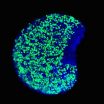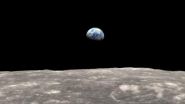(Press-News.org) What mode of transportation makes you happiest?
Clemson researchers investigated how emotions like happiness, pain, stress, sadness and fatigue vary during travel and by travel mode in a new study published in the journal Transportation.
Utilizing data from the American Time Use Survey, collected by the Bureau of Labor Statistics, the researchers were able to determine the average mood felt by people during different types of travel.
"We found that people are in the best mood while they are bicycling compared to any other mode of transportation," said Eric Morris, lead author on the study and assistant professor in Clemson's planning, development and preservation department.
Morris said that bicyclists tend to be a self-selected group who are very enthusiastic about their mode of transportation.
"Bicyclists are generally younger and physically healthy, which are traits that happier people usually possess," he said.
Next happiest are car passengers and then car drivers. Bus and train riders experience the most negative emotions, though a small part of this can be attributed to the fact that mass transit is disproportionately used for commuting to and from work, according to the researchers.
Their findings suggest that bicycle use may have benefits beyond the typically cited health and transportation ones, and that improving transit riders' emotional experience may be as important as improving traditional service features, such as headways and travel speeds.
"Understanding the relationship between how we travel and how we feel offers insight into ways of improving existing transportation services, prioritizing investments and theorizing and modeling the costs and benefits of travel," said Morris.
INFORMATION:
Study finds mode of transportation affects how we feel
2014-05-29
ELSE PRESS RELEASES FROM THIS DATE:
Study: New genes identified may unlock mystery of keloid development
2014-05-29
DETROIT – Researchers at Henry Ford Hospital in Detroit have uncovered previously unidentified genes that may be responsible for keloid scarring, a discovery that could unlock the mystery of keloid development and provide insight for more effective treatment.
"Much of the uncertainty surrounding keloids is rooted in there being no known cause for their development," says study lead author Lamont R. Jones, M.D., vice chair, Department of Otolaryngology-Head and Neck Surgery at Henry Ford.
"But it is believed that keloids have a genetic component given the correlation ...
How breast cancer 'expresses itself'
2014-05-29
About one in eight women in the United States will contract breast cancer in her lifetime. Now new research from Tel Aviv University-affiliated researchers, in collaboration with Johns Hopkins University, has provided another tool to help women, clinicians, and scientists searching for a cure to the one of the most widespread yet incurable diseases on the planet.
Dr. Ella Evron and Dr. Ayelet Avraham of the TAU-affiliated Assaf Harofeh Medical Center, together with Prof. Saraswati Sukumar of Johns Hopkins, have found that "gene regulation," the process that shuts off ...
Cloud formation & rainfall affected by pollutant oxidation of biodiesel emissions
2014-05-29
A study into how organic molecules in the atmosphere affect cloud formation has found that a main component of biodiesel, methyl oleate, reacts with ozone surprisingly fast. This process may counterbalance the growth of water droplets resulting from emissions, which would in turn inhibit cloud formation and therefore affect the water cycle in a highly complex way.
The research, published in the journal Physical Chemistry Chemical Physics, was performed by an international team of scientists working at the ILL (Institut Laue-Langevin) in Grenoble, France.
Methyl oleate ...
Lost in translation?
2014-05-29
CAMBRIDGE, Mass. (May 29, 2014) – In any animal's lifecycle, the shift from egg cell to embryo is a critical juncture. This transition represents the formal initiation of development—a remarkably dynamic process that ultimately transforms a differentiated, committed oocyte to a totipotent cell capable of giving rise to any cell type in the body.
Induction of totipotency (as well as the pluripotency characteristic of embryonic stem cells) requires dramatic changes in gene expression. To date, investigations of such changes have largely focused on transcription, when DNA ...
There's more than one way to silence a cricket
2014-05-29
For most of us, crickets are probably most recognizable by the distinctive chirping sounds males make with their wings to lure females. But some crickets living on the islands of Hawaii have effectively lost their instruments and don't make their music anymore. Now researchers report in the Cell Press journal Current Biology on May 29 that crickets living on different islands quieted their wings in different ways at almost the same time.
"There is more than one way to silence a cricket," says Nathan Bailey of the University of St Andrews. "Evolution by natural selection ...
Melanoma of the eye caused by 2 gene mutations
2014-05-29
Researchers at the University of California, San Diego School of Medicine have identified a therapeutic target for treating the most common form of eye cancer in adults. They have also, in experiments with mice, been able to slow eye tumor growth with an existing FDA-approved drug.
The findings are published online in the May 29 issue of the journal Cancer Cell.
"The beauty of our study is its simplicity," said Kun-Liang Guan, PhD, professor of pharmacology at UC San Diego Moores Cancer Center and co-author of the study. "The genetics of this cancer are very simple ...
'Free choice' in primates altered through brain stimulation
2014-05-29
When electrical pulses are applied to the ventral tegmental area of their brain, macaques presented with two images change their preference from one image to the other. The study by researchers Wim Vanduffel and John Arsenault, KU Leuven and Massachusetts General Hospital, is the first to confirm a causal link between activity in the ventral tegmental area and choice behavior in primates.
The ventral tegmental area is located in the midbrain and helps regulate learning and reinforcement in the brain's reward system. It produces dopamine, a neurotransmitter that plays an ...
Activation of brain region can change a monkey's choice
2014-05-29
Artificially stimulating a brain region believed to play a key role in learning, reward and motivation induced monkeys to change which of two images they choose to look at. In experiments reported online in the journal Current Biology, researchers from Massachusetts General Hospital (MGH) and the University of Leuven in Belgium confirm for the first time that stimulation of the ventral tegmental area (VTA) – a group of neurons at the base of the midbrain – can change behavior through activation of the brain's reward system.
"Previous studies had correlated increased ...
Fertility: Sacrificing eggs for the greater good
2014-05-29
Baltimore, MD— A woman's supply of eggs is a precious commodity because only a few hundred mature eggs can be produced throughout her lifetime and each must be as free as possible from genetic damage. Part of egg production involves a winnowing of the egg supply during fetal development, childhood and into adulthood down from a large starting pool. New research by Carnegie's Alex Bortvin and postdoctoral fellow Safia Malki have gained new insights into the earliest stages of egg selection, which may have broad implications for women's health and fertility. The work is reported ...
NASA missions let scientists see moon's dancing tide from orbit
2014-05-29
Scientists combined observations from two NASA missions to check out the moon's lopsided shape and how it changes under Earth's sway – a response not seen from orbit before.
The team drew on studies by NASA's Lunar Reconnaissance Orbiter, which has been investigating the moon since 2009, and by NASA's Gravity Recovery and Interior Laboratory, or GRAIL, mission. Because orbiting spacecraft gathered the data, the scientists were able to take the entire moon into account, not just the side that can be observed from Earth.
"The deformation of the moon due to Earth's pull ...




